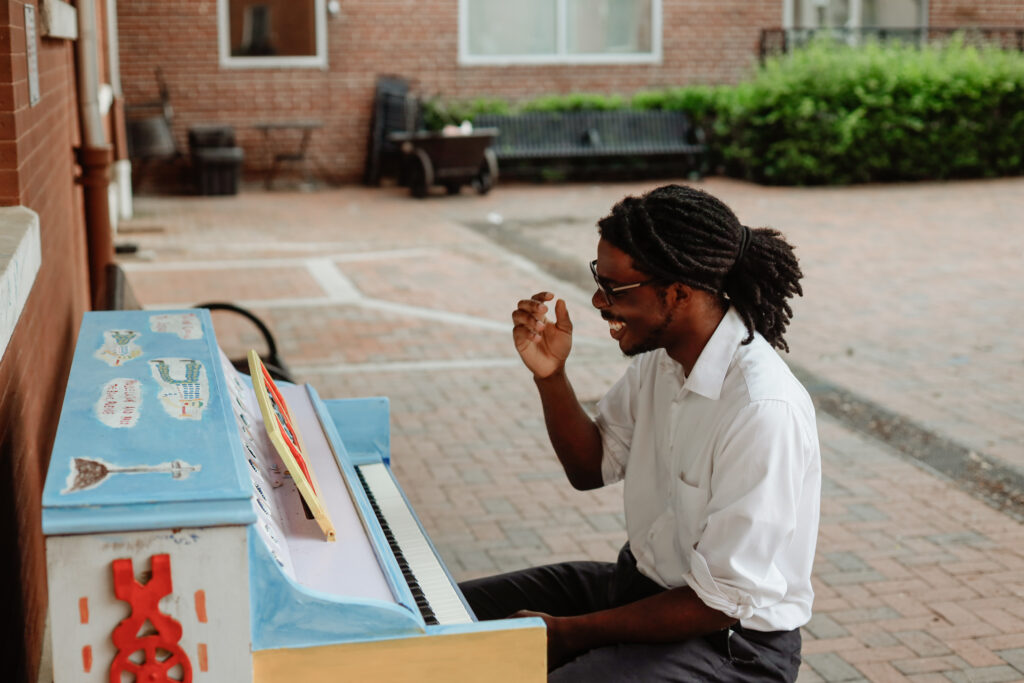Marietta is full of untapped potential, but we’re being held back by outdated ideas, poor planning, and leaders who aren’t in tune with the needs of our community. I’m running for Mayor because it’s time for fresh energy, practical solutions, and a bold vision for our city’s future. Together, we can create a Marietta that works for everyone—a place that’s affordable, connected, and thriving. Let’s make the changes we need, starting now.
Take a look at our top priorities below. We want to hear from you. Let us know what matters most by reaching out to [email protected].

The cost of housing keeps going up, and many residents in Marietta, especially seniors, working families, and young people, are struggling to keep up.
We need to make sure we’re building enough housing to meet the demand our city is experiencing, while also making sure that housing is actually affordable for residents to live in.
A big part of that is also making sure that homes stay affordable once they’re built. A great way for us to do this is by pushing for Community Land Trusts, and also by allowing communities to change over time.
Too many streets in Marietta are unsafe for people walking, biking, or using a wheelchair. Sidewalks that randomly end, streets without crosswalks for a mile in either direction, and intersections with no safe crossings are far too common. We’ve seen far too many accidents that could have been avoided with better planning. For many of us, the current situation just isn’t good enough.
Our neighbors, whether they’re walking, biking, or driving, deserve to get to where they’re going safely. I’m committed to making our streets safer. This means slowing down traffic in our neighborhoods, adding more crosswalks, fixing dangerous intersections, and making sure that everyone, no matter how they get around, can feel safe. Safety can’t be an afterthought. It needs to be a priority in every decision we make about transportation.
Traffic isn’t just a nuisance, it’s a drain on our time, wallets, and quality of life. Long commutes and car dependency cost families thousands each year and make it harder to enjoy our communities.
We can reduce traffic by making it easier to get around outside of a car. That means investing in reliable buses, safe sidewalks, and bike infrastructure that actually connects people to where they need to go.
Focusing growth in walkable, mixed-use neighborhoods, especially near downtown, helps reduce congestion while giving people more choices in how they move.
We also need to invest in better road infrastructure, like more roundabouts, reduced driveways on arterials and smart traffic lights to reduce bumper to bumper traffic.
Property taxes keep going up because the cost of city services keeps rising, and the tax base isn’t keeping up. Homeowners are paying more while vacant lots and underused land sit idle.
We can ease the tax burden on residents by growing smarter. Encouraging infill development—especially walkable, mixed-use buildings downtown, brings in more commercial investment without expanding costly infrastructure.
When we focus growth where services already exist, we create more value per acre, generate more local revenue, and make it possible to lower residential tax rates while funding the things our community needs.
Everyone deserves a safe place to sleep at night. Homelessness isn’t a personal failure, it’s a policy failure. We can’t arrest or ignore our way out of this crisis.
The most effective way to end homelessness is with stable housing first. By investing in supportive housing, low-barrier shelters, and mental health services, we can help people get back on their feet and stay housed.
Infill development can also help by increasing the supply of affordable homes near jobs, transit, and services. When we treat housing as infrastructure, we can build a city where no one is left behind.
Our parks, forests, and open spaces are vital to our health, environment, and quality of life. Once we pave them over, we don’t get them back.
By focusing growth in already-developed areas, we can protect our green spaces from sprawl. Infill development helps us meet housing and commercial needs without sacrificing nature.
Protecting trees, expanding parks, and investing in green infrastructure keeps our city cooler, cleaner, and more resilient, especially as we face rising temperatures and heavier storms.
I’m proud to have been endorsed by several organizations for my dedication to protecting the green space and tree cover in Marietta.
People deserve to know how decisions are made, where money is going, and who’s being heard. Trust in local government starts with real transparency.
We’ll publish clear, accessible data on budgets, development, and public meetings, so residents can see what’s happening and why.
Beyond open records, we’ll create systems for ongoing public input, proactive communication, and community oversight that makes local government accountable to the people it serves.
Marietta’s aging population deserves to live with dignity, independence, and connection to the community. Too often, seniors face limited housing and transit options that don’t meet their needs.
We can change that by investing in accessible and affordable options for seniors to age in place. Zoning reforms that allow smaller and more manageable homes are a big part of the solution.
We also need to make sure that seniors can get around safely and independently. That means expanding public transit, making sure that sidewalks and crosswalks are safe, and adding benches and shelters at bus stops. By investing in community infrastructure for our most vulnerable population, we create Safe Streets for All and build a Marietta for Everyone.